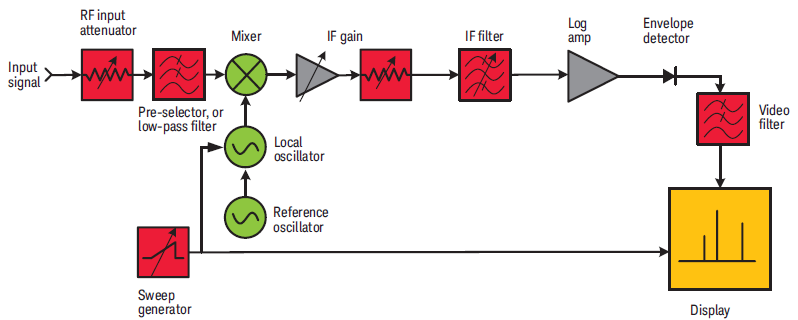Spectrum analyzers can usually be represented by the following block diagram:
Before entering the video filter, the signal passes through an envelope detector. What I don't understand is why this is done.
As far as I understand, the envelope detector presents at its output just the envelope, and not the carrier. So, wouldn't this filter out the carrier signal? I believe this is undesired because one would like to see on the display the frequency content of both the carrier and the envelope. How does this actually work and why?

